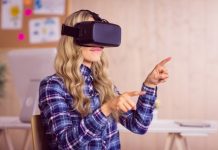We realize that the title of the article sounds a bit over the top, but we at ARinMED don’t hide the fact that we absolutely love augmented reality and believe that it has the capacity to change the landscape of medicine. Because of this, when we heard about a study done by the Catholic University of Valencia San Vicente Martir’s Department of Podiatry in Valencia, Spain that planned to compare the use of three different study methods for anatomy, we got excited. It could answer one of our biggest and oldest questions: is augmented reality really capable of replacing traditional methods of study? We couldn’t wait, and were thrilled to share their findings.

The researchers compared three different study methods: textbook notes and diagrams, videos, and, for the first time, augmented reality. They were graded based on four aspects: time spent, acquired learning, metacognitive perception (which involves the perception of active control over the cognitive processes engaged in learning), and the prospects of the use of augmented reality for the study of medicine. There were 171 students who participated, 78 of which were obtaining a medical degree (24 used classic notes, 22 used video and 24 used AR), 48 were getting a Physiotherapy Degree (22 used classical notes, 13 video, and 22 used AR), and 45 from a Podiatry Degree (14 Notes, 17 Video, and 14 AR).
The group who used just notes spent an average of 182.95 minutes studying, the video group spent 140.83 minutes, and the AR group spent 189.35 minutes. However, while the AR group spent slightly more time on average, the results seem to be worth it. The researchers administered an objective test to assess the comprehension and retention of anatomy knowledge. The maximum score was 10 points. The AR group averaged a score of 7.20, the video group, 6.54, and the classic notes group obtained 5.61. The scores in the AR group all also had a tighter distribution–the scores were clustered closer together than the notes group and the video group.

Metacognition is the way of learning how to reason about the reason itself, to apply the thought to the act of thinking, to learn to learn, it is improving the intellectual activities and tasks we carry out using reflection to guide them and to ensure a good execution (Yael Abramovicz Rosenblatt), or in this case, learning to study. This study found that augmented reality was useful in holding the students’ attention, and found a correlation between use of a longer study time and less distraction. The students that used the AR technology improved their focus on the task at hand. It took a little longer, but the effects were better.

In conclusion, even though AR is certainly a technology that is still taking its first steps in medical education, this study has done a great job in proving that it has a lot of promise. AR clearly has potential for teaching lots of branches of medicine, we would argue even more than just the three that were tested, and the objective testing that the researchers did have demonstrated that well. There will be a learning curve for students, but with more studies, we think that an argument could definitely be made for AR being the gold standard for learning. Let’s hope that happens soon! Let us know what you think in the comments section!








